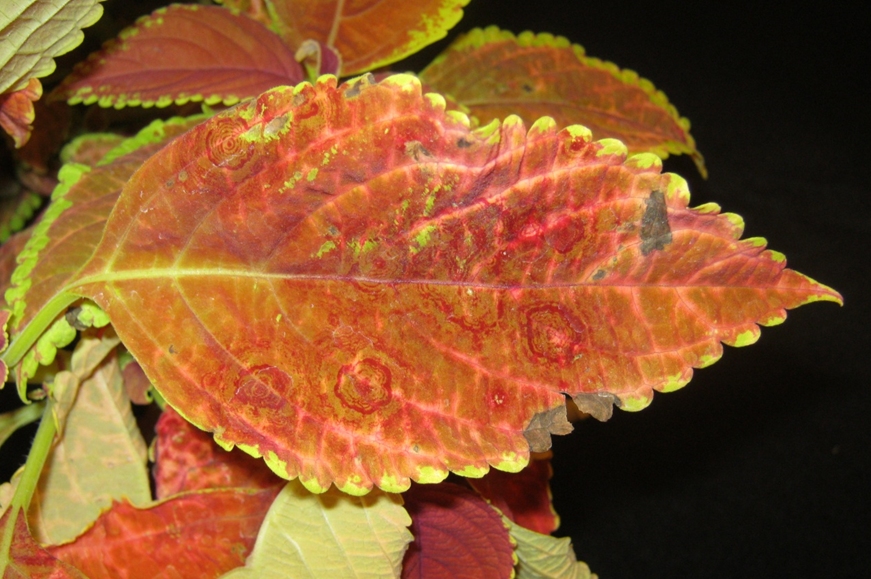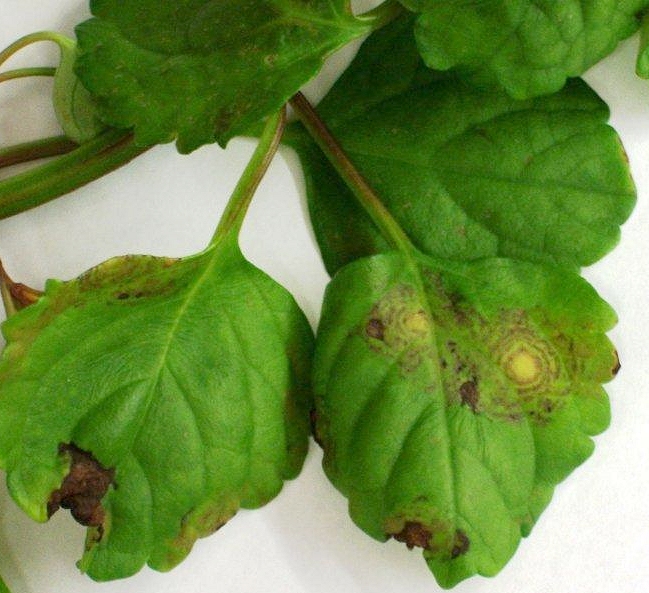Viruses of Annuals and Vegetable Transplants
 Causal Agent
Causal Agent
Several viruses including tobacco mosaic virus (TMV), impatiens necrotic spot virus (INSV), tomato spotted wilt virus (TSWV), and cucumber mosaic virus (CMV) cause unusual symptoms on annuals and vegetable transplants. Laboratory testing is required to determine the exact virus responsible.
Hosts
 Annuals including impatiens, petunia, calibrochoa, daisies, etc are possible hosts
of plant viruses. Vegetable plants including (but not limited to) tomato, pepper,
eggplant, and squash are potential hosts. Plants that are started in greenhouses may
be at a higher risk than those that are direct seeded. This is due to insect vectors
that may be found in greenhouses, but aren't usually as common in the field.
Annuals including impatiens, petunia, calibrochoa, daisies, etc are possible hosts
of plant viruses. Vegetable plants including (but not limited to) tomato, pepper,
eggplant, and squash are potential hosts. Plants that are started in greenhouses may
be at a higher risk than those that are direct seeded. This is due to insect vectors
that may be found in greenhouses, but aren't usually as common in the field.
Symptoms
 Plants may appear stunted and unusual spots or line patterns are often observed. Mosaic
or mottle may be present. Flower and fruit production may be affected. Occasionally,
distinct ring spots are observed. In some cases, symptoms may be confused with chemical
injury. Be sure to rule out chemical injury (particularly herbicides) as a source
of symptoms.
Plants may appear stunted and unusual spots or line patterns are often observed. Mosaic
or mottle may be present. Flower and fruit production may be affected. Occasionally,
distinct ring spots are observed. In some cases, symptoms may be confused with chemical
injury. Be sure to rule out chemical injury (particularly herbicides) as a source
of symptoms.
Control
When possible, the plant(s) should be sampled to determine the exact virus responsible. This helps to determine host range so further spread can be prevented. In most cases, symptomatic leaf samples can be collected and submitted to a plant diagnostic lab for testing. Consult with your local county extension educator to arrange for testing.
Once a plant is infected with the virus, it should be discarded immediately. It may serve as a source of spreading the virus to new plants. Carefully scout the remaining plants and isolate suspect plants. Manage insect populations in greenhouses, especially thrips. For some viruses, resistant plants are available. Consult seed catalogs or contact your county extension office for more information.
